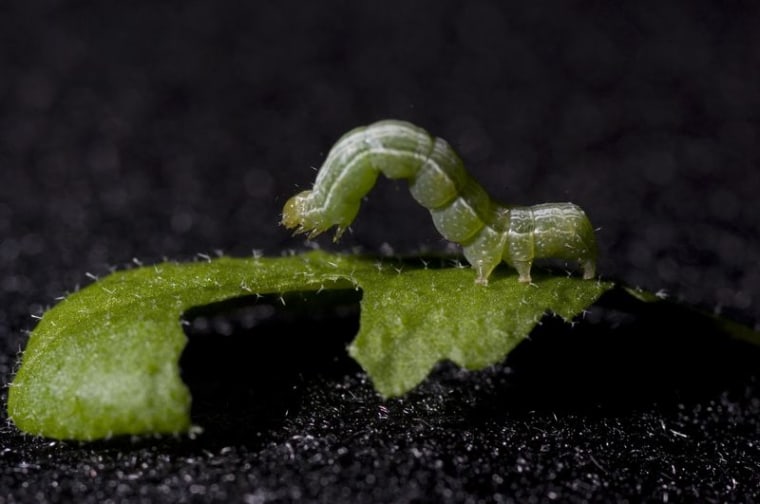Eat all you want and still lose weight sounds like a line from a late night infomercial, but it's exactly how some plants are getting away with murder.
After a caterpillar starts chomping on their leaves, some potato and tomato species take revenge by producing a defensive chemical that stops insect growth. The chemical, TD2, breaks down a key nutrient, threonine, which insects need to grow.
The salad bar presented by the plants' leaves proves to be a deadly mirage. Like Erysichthon in Greek mythology, who was cursed with unending hunger, the unfortunate insects starve even though their bellies are full.
The chemical, TD2, only does it's dirty work once it's inside the caterpillar's stomach. So eating more of the plant only makes the hapless leaf-muncher hungrier.
This sadistic self-defense mechanism was recently studied by Gregg Howe of Michigan State University. He found that some plants, like tomatoes and potatoes, could produce TD2, a special form of the enzyme threonine deaminase, after being attacked by insects.
All plants have threonine deaminase, or TD1, but only certain ones can produce TD2. The chemical structure of TD2 is more stable than TD1, which makes it easier to store and longer lasting. That means TD2 could someday be useful in the development of new pest control methods.
“The arms-race paradigm is quite important for explaining plant chemical diversity and interactions between plants and herbivores in general,” Howe said in a Michigan State press release, “Unfortunately, our understanding of the molecular evolution of chemical defensive traits is still in its infancy.”
The research was recently published in the Proceedings of the National Academy of Sciences.
